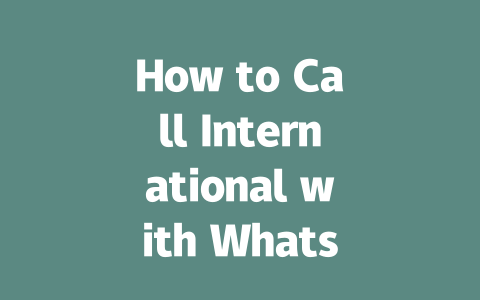Step 1: Choosing Topics That Actually Get Searched
Let’s talk about choosing topics wisely because if no one is searching for what you write, even the best-written piece won’t help much. Think of it this way—if you’re hungry and looking up recipes online, are you typing “gourmet culinary techniques” or something more straightforward like “easy dinner ideas”? Exactly! Most people keep their searches simple. So, how do we pick topics?
First off, think about what problems your readers might have. Last year, I helped a friend optimize her food blog, and she noticed her traffic skyrocketed after tweaking her topic selection. For instance, instead of going with broad terms like “healthy eating,” she started focusing on specific issues such as “quick meals under $5.” Those kinds of targeted phrases tend to resonate better with real users who are actively seeking solutions.
Why Keywords Matter in Topic Selection
Why does putting these common words matter so much? Because Google’s search robots first look at the main idea behind each page. If they see that your blog post matches closely with what someone typed into the search bar, bingo—you rank higher! This isn’t rocket science; it’s just understanding how people communicate digitally.
Now, let’s dive deeper into structuring our articles effectively once we know which keywords will attract visitors.
Step 2: Crafting Titles That Stand Out
Once you’ve nailed down your subject matter, now comes creating titles that actually grab attention. Remember, most people skim past dozens of options before clicking one link over another. How do you make yours stand out from the crowd?
Here’s where placing those important keywords early in your title helps enormously. For example, take “Beginner Tips for Growing Houseplants Without Killing Them.” Notice how “beginner tips” targets exactly whom I want to reach while promising value upfront. Also, using numbers sometimes adds clarity: “Top 7 Ways…” makes the content sound actionable and organized.
What Google Says About Title Tags
Google has mentioned before (check out this resource for details) that effective titles should tell potential visitors precisely why clicking would benefit them. Avoid vague promises or buzzwords unless they truly match what awaits inside the article itself.
To test whether your headline works well enough, read it aloud and ask yourself honestly: Would I click on this based solely on its phrasing? Be critical—it pays dividends later.
Step 3: Writing Content That Delivers Value
Finally, let’s discuss the meat of your post—the actual content. Sure, having catchy titles and optimized keywords is great, but without delivering substantial value within the body text, all bets are off. Google’s algorithms favor sites providing useful information, meaning you need to ensure every paragraph serves a purpose.
When organizing thoughts, imagine breaking things into digestible chunks:
|
|
|
|
|
| Subdivide sections clearly with H2/H3 tags to improve readability.| Section titled “Step 2” explains crafting compelling titles.|
|
| Visual aids enhance comprehension and break monotony.| A screenshot showing proper title structure.|
Lastly, remember tools exist to verify quality further. After finishing drafts, utilize platforms like Google Search Console to identify technical glitches hindering performance.
There you go—three actionable ways to boost visibility without needing advanced SEO knowledge. Try implementing these tactics next time around, and feel free to share results or questions below. Helping others succeed brings joy, doesn’t it?
If you’re on a WhatsApp call and can’t hear the person on the other end, it might not always be their fault. Sometimes, your own internet connection could be the culprit. For example, if your download speed drops below 1 Mbps for voice calls or 5-12 Mbps for video calls, the quality will suffer. You might want to check your network status before jumping to conclusions. Another thing to keep in mind is whether your app is up to date. Outdated versions of WhatsApp occasionally cause glitches like this, so head over to your app store and make sure everything’s current.
Your device itself could also play a role in these issues. Have you ever noticed how restarting your phone can fix random problems? Well, it applies here too. A simple reboot might clear out any software hiccups affecting your audio during calls. If none of this works, switching from Wi-Fi to mobile data (or vice versa) is worth trying. Sometimes one network performs better than the other, depending on your location or service provider.
# FAQs
How do I make an international call using WhatsApp?
To make an international call on WhatsApp, open the app and go to the chat of the contact you want to call. Tap the phone icon, and WhatsApp will automatically use your internet connection to place the call. Ensure both you and the recipient have active internet access for voice or video calls.
Can I call landline numbers internationally with WhatsApp?
No, WhatsApp only supports calls to other WhatsApp users. You cannot call landline or non-WhatsApp mobile numbers directly through the app. Both parties need to have WhatsApp installed and be connected to the internet.
Is there a cost associated with making international calls via WhatsApp in 2025?
WhatsApp does not charge for international calls as long as you have a stable internet connection. However, check your data plan charges if using mobile data. Calls over Wi-Fi are typically free of additional costs beyond your standard internet subscription.
What is the minimum internet speed required for smooth international calls on WhatsApp?
For optimal performance, WhatsApp recommends a download speed of 5-12 Mbps for video calls and at least 1 Mbps for voice calls. Lower speeds may result in reduced call quality or interruptions.
Why can’t I hear the person on the other end during an international WhatsApp call?
This issue could arise due to poor internet connectivity, outdated app versions, or device-specific problems. Ensure your internet is stable, update WhatsApp to the latest version, and restart your device if necessary. If the problem persists, try switching between Wi-Fi and mobile data.




